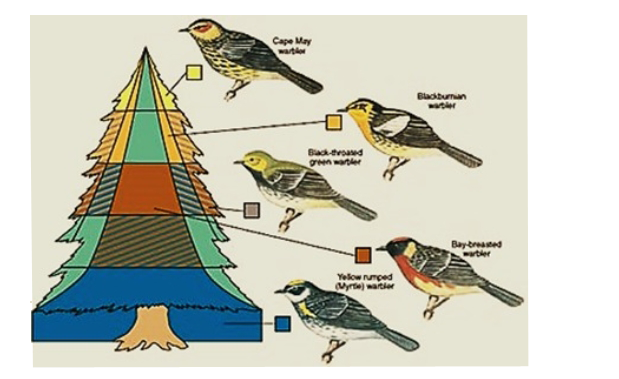By corpuscular theory of light, the phenomenon which cannot be explained is
Reflection
interference
diffraction
Polarisation
The correct Answer is:A
To solve the question regarding which phenomenon cannot be explained by the corpuscular theory of light, we can follow these steps:
1. Understand the Corpuscular Theory of Light:
- The corpuscular theory, proposed by Isaac Newton, suggests that light is made up of tiny particles called "corpuscles" that travel in straight lines.
2. Identify the Phenomena:
- The question lists four phenomena: reflection, interference, diffraction, and polarization. We need to analyze each of these in the context of the corpuscular theory.
3. Analyze Each Phenomenon:
- Reflection: This phenomenon can be explained by the corpuscular theory. When light particles (corpuscles) hit a reflective surface, they bounce back, which aligns with the idea of straight-line motion.
- Interference: This phenomenon involves the superposition of waves and is best explained by the wave theory of light. The corpuscular theory does not adequately explain how two light beams can combine to create interference patterns.
- Diffraction: This phenomenon occurs when light waves bend around obstacles or spread out after passing through narrow openings. It is a wave property and cannot be explained by the corpuscular theory.
- Polarization: This phenomenon involves the orientation of light waves and is also explained by wave theory. The corpuscular theory does not account for the directional properties of light.
4. Conclusion:
- Among the given options, interference, diffraction, and polarization cannot be explained by the corpuscular theory of light. However, reflection can be explained. Therefore, the phenomenon that cannot be explained by the corpuscular theory is interference.
Final Answer:
The phenomenon that cannot be explained by the corpuscular theory of light is interference.
---
- The corpuscular theory, proposed by Isaac Newton, suggests that light is made up of tiny particles called "corpuscles" that travel in straight lines.
- The question lists four phenomena: reflection, interference, diffraction, and polarization. We need to analyze each of these in the context of the corpuscular theory.
- Reflection: This phenomenon can be explained by the corpuscular theory. When light particles (corpuscles) hit a reflective surface, they bounce back, which aligns with the idea of straight-line motion.
- Interference: This phenomenon involves the superposition of waves and is best explained by the wave theory of light. The corpuscular theory does not adequately explain how two light beams can combine to create interference patterns.
- Diffraction: This phenomenon occurs when light waves bend around obstacles or spread out after passing through narrow openings. It is a wave property and cannot be explained by the corpuscular theory.
- Polarization: This phenomenon involves the orientation of light waves and is also explained by wave theory. The corpuscular theory does not account for the directional properties of light.
- Among the given options, interference, diffraction, and polarization cannot be explained by the corpuscular theory of light. However, reflection can be explained. Therefore, the phenomenon that cannot be explained by the corpuscular theory is interference.
The phenomenon that cannot be explained by the corpuscular theory of light is interference.
Topper's Solved these Questions
- WAVE OPTICSBook:AAKASH INSTITUTE ENGLISHChapter:WAVE OPTICSExercise:Assignment (Section-B (objective type question(one option is correct)))
Explore 5 Videos
- WAVE OPTICSBook:AAKASH INSTITUTE ENGLISHChapter:WAVE OPTICSExercise:Assignment (Section-C (objective type question(More than one option are correct)))
Explore 5 Videos
- WAVE OPTICSBook:AAKASH INSTITUTE ENGLISHChapter:WAVE OPTICSExercise:Try yourself
Explore 24 Videos
- UNITS AND MEASUREMENTSBook:AAKASH INSTITUTE ENGLISHChapter:UNITS AND MEASUREMENTSExercise:ASSIGNMENT (SECTION - D)
Explore 15 Videos
- WAVESBook:AAKASH INSTITUTE ENGLISHChapter:WAVESExercise:ASSIGNMENT ( SECTION-D ( Assertion - Reason Type Questions ))
Explore 12 Videos
Similar Questions
Which cannot be explained by Lamarckism ?
View SolutionMutation cannot explain
View SolutionCorpuscular theory of light predicts speed of light to be
View Solution
Observe the picture and state the phenomenon that can be explained by this
View SolutionWith respect to electromegnetic theory of light, the photoelectric effect is best explained by statement
View SolutionLamarckism cannot explain
View SolutionAccording to corpuscular theory of light, the different colours of light are due to
View SolutionHuygen's wave theory explain the phenomena of
View SolutionThe phenomenon that is not part of Darwin's theory was :
View SolutionNatural selection cannot explain
View Solution